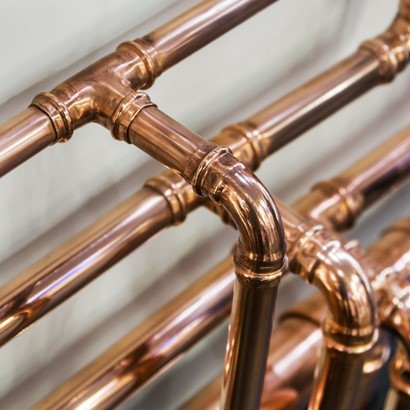Alessandro DeMarinis of New York is a 4th generation plumber at his family's business. In the following article, Mr. DeMarinis discusses what to consider when an old building needs new pipes.
Fully re-piping a large building is a massive undertaking. Across the world, notable structures and large apartment buildings alike require extensive maintenance work. Only the most skilled plumbing contractors can adequately refit a historic or large commercial building with new pipes.
Alessandro DeMarinis of New York explains more about the laborious process of repiping. Fair warning: it's not a job for the faint-hearted.
Why Old Buildings Need New Pipes
Historic buildings often become ruins because it's considered that maintenance could be intrusive and damage the building's integrity.
From New York's office skyscrapers to the UK's Houses of Parliament to Soviet-era apartment tower blocks in Central and Eastern Europe, buildings worldwide risk going defunct because jobs like repiping and rewiring seem too ambitious, costly, and potentially damaging to undertake.
However, adequate plumbing isn't negotiable explains Alessandro DeMarinis of New York. The work must be done, and done right. These are the challenges plumbing contractors face when repiping old buildings.
" Repairs vs. Re-piping
People who live in old buildings will be familiar with a plumber's exasperated face as they examine old, barely functional piping and explain, Ideally, this would all be ripped out. But that sounds costly and time-consuming. Landlords typically agree a quick fix is fine.
Alessandro DeMarinis reports that people who own large apartment buildings or manage historic structures are acutely aware of this cost. They often go to pains to avoid it. Repairs to critical areas are often preferred to full re-piping.
Ironically, this only costs more in the long run explains Alessandro DeMarinis of New York. Repairs will be required more frequently, in turn, increasing the overall cost. Eventually, re-piping becomes inevitable. For property owners, the game of chance is to pass the building onto a new owner before that moment arrives.
So the first challenge facing plumbing contractors is to persuade the owner that repiping is an essential service for old buildings. Not such a problem with the owners of luxury apartments who keep tenant satisfaction a priority. If they can pass this hurdle, it's onto practical concerns.
" The Building's Structure
If a building's piping is suspect, it's likely that other parts haven't been properly maintained. This is especially true in large apartment buildings, where issues like rotting drywall and electrical cables are often neglected.
Alessandro DeMarinis of New York reports that plumbing contractors must assess the areas around the piping and ensure that renovations won't damage the existing structure. Separate contractors may need to be called in where appropriate.
" Permission
Many historical buildings require specific permissions before work can begin. An untrained contractor could seriously damage a heritage site, so contractors are often thoroughly audited by cultural preservation bodies before work can begin.
" Time
Determining a timescale for repiping an old building is extremely difficult. Issues often arise during the job, e.g., an area of rotten wall that wasn't visible until work began.
However, Alessandro DeMarinis of New York says that by providing an accurate timescale is essential both for the building's owners and its residents. Contractors must negotiate full access to the building's existing plumbing system before work begins to establish how long work is likely to take.
" Access
Re-piping an apartment complex is especially complicated, as work sometimes necessitates working in private apartments. Contractors must work with owners and tenants to establish when work can proceed.
Without significant advance warning, tenants can't be expected to vacate their apartments for renovation works. Contractors should consult with owners about when they'll need to access private areas.

" Best Materials
Alessandro DeMarinis of New York explains that copper is widely acknowledged as the most long-lasting material for piping, but it's somewhat expensive and is sometimes unwieldy for re-piping jobs.
Plastic alternatives such as CPVC and PEX are sometimes preferred for difficult plumbing jobs. They're more pliable, meaning that the process is less intrusive and may require less removal of drywall and flooring.
However, copper lasts for much longer. Plumbing contractors typically recommend copper when restoring heritage buildings to minimize disruption.
" The Well-being of Residents
Major plumbing jobs often require plumbers to switch off mains water supplies for a while sometimes days. While residents may accept half a day without running water, contractors and property owners can't expect residents to endure days without clean water.
Contractors need to explain when mains water will need to be switched off well before work begins.
" Continuing Maintenance
The proof is in the finished product re-plumbing an old building is a major job, and it's expected that there will be some issues. A small bit of pipe may need to be adjusted or repaired to optimize water pressure, or a minor leak may be detected. Contractors and property owners should be prepared to accommodate these errors explains Alessandro DeMarinis of New York.
Final Thoughts
Repiping large, historical buildings requires patience, cooperation, and communication from all parties. It's an essential service for all large buildings, from apartment complexes to national monuments. Best to start planning early.